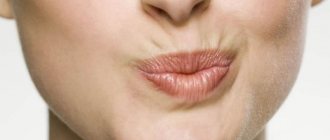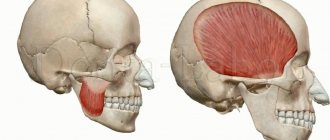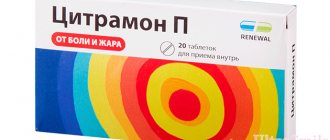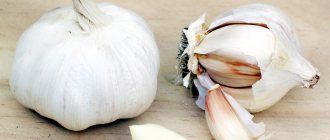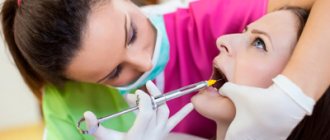Probably one of the most terrible pains a person can experience is toothache. When a tooth hurts, it is almost impossible to endure, and then even the most ardent dentist-hater goes to “surrender” to the doctor. But not everyone knows why teeth hurt and how to avoid these unpleasant sensations. Together with the dentist-therapist of the StilDent clinic, Elena Gennadievna ZIBNITSKAYA, we will look at the most common causes of toothache.
The most common causes of toothache are caries, pulpitis, periodontitis and pericoronitis.
What is the effect of acupressure based on?
The acupressure technique is based on the ideas of Eastern sages about the structure of the human body. In ancient China, it was believed that 14 rivers of vital energy Chi flow through the human body. If they do not encounter obstacles, then with their flow they safely carry energy to all internal organs. But if a malfunction suddenly occurs and the organs receive Chi energy in different quantities, the person begins to get sick. Ancient doctors believed that balance could be restored by massaging certain points. This is how the Chinese technique of acupuncture appeared.
According to another Eastern theory, two principles are constantly fighting in the human body: the female Yin - changeable, cold, dark - and the male Yang - constant, warm, light. Balance can be achieved by applying pressure in the right places.
Why does toothache radiate to the ear?
Pain in the ear is observed with disease of the lower molars, and anterior to the tragus - with the upper molars. More often it appears as a result of deep caries and its complications. Diagnosed with the eruption of wisdom teeth, alveolitis, amphodontosis.
Advanced form of caries of extreme teeth
Caring for molars, or molars, is more difficult. In this regard, carious processes often start. The development of caries leads to the fact that not only the tooth, but also the ear begins to hurt. Ear pain worsens while eating, closer to evening.
Pulpitis
Pathology appears as caries progresses. An inflamed pulp causes severe spontaneous pain. Not only the tooth can cause concern, but also the ear close to it, the back of the head and the cheek. Irradiation is observed along the corresponding branch of the trigeminal nerve. Painful sensations are both short-term and long-term.
Alveolitis
Develops as a result of infection, extraction trauma. It is characterized by an inflammatory process of the walls of the socket of the extracted tooth. Pain syndrome appears 1-3 days after removal, accompanied by an increase in temperature. At first the pain is aching and intermittent. Later it intensifies and becomes permanent. It often radiates to the temple or ear.
Endodontic dental treatment
When sanitation of molars, filling material can get into the mandibular canal. This leads to post-filling pain, which is considered a response to tissue irritation by the injected substances. The intensity of the inflammatory process depends on the chemical composition of the drug.
Removal of the third molar or wisdom tooth
Ear pain after wisdom tooth removal is explained by its close location to the trigeminal nerve. Damage may occur during the procedure. There is also a high risk of developing a dry socket within 5 days. This means that the blood clot, which forms after a tooth extraction and helps the wound heal, has been washed out or has disintegrated. Dry socket is dangerous because it exposes bone and nerves and causes intense pain.
Acupuncture points for toothache
The ancient Chinese identified two massage points for toothache and gave them figurative names.
Point He-gu - “closed gorge”
How to find:
The He-gu point can be detected if you close the thumb and index fingers of your hand - a tubercle forms at this place, and with open fingers - a depression. It is important to compare the description of points on the body from toothache with the pictures.
How to massage:
Press on the toothache point on the hand with the thumb of the opposite hand, moving it up and down, while simultaneously clicking your teeth. Duration: 2 to 3 minutes until the skin turns red. If the tooth hurts on the right, you need to massage the point on the left on the left hand and vice versa, and in case of severe pain, act on both at once. This method is not recommended for pregnant women.
Jia Che points - “cheek cart”
How to find:
these are symmetrical points on the lower jaw. If the jaws are open, the points are located in the cavity; when closed, the points are in the place of convexity of the masticatory muscles.
How to massage:
The massage should be very gentle. First, light pressure with your index finger, then 30 circular movements. You can perform no more than five approaches at a time.
Acute periodontitis
Periodontitis is an inflammatory process in periodontal (periodontal) tissues in the area of the apex of the tooth root. Often, inflammation involves the cementum and dentin of the tooth root, as well as the alveolar bone. Periodontitis in most cases occurs due to damage to the pulp, that is, pulpitis.
Symptoms
- The pain is constant, throbbing, with clear localization
- The pain intensifies from any touch to the tooth, including when chewing
- Pain may spread to part of the face
- Headache
- General weakness
- Temperature increase
- Cheek swelling
- Pain in the gum, redness and swelling in it
- Submandibular and chin lymph nodes are enlarged
- Possible discharge of pus from the root canal
Quick and effective point for toothache Yoshiro Tsutsumi
The famous Japanese specialist in alternative medicine, Yoshiro Tsutsumi, studied the technique of acupressure for more than 30 years, as a result of which he wrote the popular book “A Simplified Method for Preserving Health with Finger Exercises.” We are interested in the section that tells you which point to press for toothache.
Te-sanri point
Yoshiro Tsutsumi in his book notes that this is a quick and effective remedy for severe toothache.
How to find:
Stretch your hand in front of you, palm up, at the junction of the palm and wrist, find the metacarpal bone of the thumb, draw a conditional line to the depression in the bend of the elbow, remember this distance. Measure 1/5 of the length of this line from the elbow, this is where the desired point is located. It is located symmetrically on the right and left hands.
How to massage:
the pad of the thumb of the opposite hand. To enhance the effect, Tsutsumi recommends massaging both points at once; to do this, you need to cross your arms, as shown in the figure. Press the point of the right hand for 1 minute with the index and middle finger of the left hand, and on the left hand with the thumb of the right hand. After a pause, cross your arms in the other direction and repeat the exercise.
Additional technique
Another acupuncture technique was invented by Japanese specialist Yoshiro Tsutsumi. He developed a unique finger technique for maintaining health. Among his recommendations are tips for relieving toothache:
- Two points are identified on the outside of the palm. One is at the base of the index finger, where the phalanx attaches to the metacarpus. The second is at the line of intersection of the base of the thumb and index finger. You need to influence the areas with round hard objects - a tennis ball, a nut. Make 10 rotational movements, then press hard. Repeat 2 – 3 times.
- To determine the second point - Te-santri - draw a conditional line from the base of the thumb to the bend of the elbow, step down 1/5. You need to massage two areas at the same time. Hands clasp the elbows on the opposite side, make circular movements with the pads of the index and middle fingers.
The areas are massaged on the opposite side of the diseased tooth.
Massage points on the face
How to find:
to the Jia Che point (see above) add two more symmetrical points, which are at the level of the earlobes, not reaching them 3 centimeters.
How to massage:
lightly touch with your index finger 10 times - first on one pair of points, then on the other.
Caries
This is a disease of the hard tissues of the tooth, leading to the destruction of enamel and dentin. First of all, caries affects the natural depressions on the teeth (fissures), as well as areas where plaque accumulates in large quantities - these are the interdental spaces and the gingival area. With caries, the hard tissues of the tooth demineralize and soften, and subsequently a defect in the form of a cavity forms on the tooth.
Caries has several stages, the process can be initial, superficial, medium and deep. At first, caries is almost asymptomatic - the main inconvenience that a person experiences is associated with food getting stuck in carious cavities. Another symptom of caries, which is usually not paid much attention to, is short-term pain from chemical, mechanical, and temperature irritants. Simply put, damaged enamel no longer protects the tooth from the effects of hot tea or ice water or from mechanical stress, and at this moment we experience pain. But because it only lasts a few seconds, we usually don't take it seriously.
When the process reaches the last stage - deep caries, the unpleasant sensations become difficult to ignore. With deep caries, the patient experiences pain when food and liquid enter the damaged area, pain when brushing teeth (irritation from paste and brushes), pain from any external irritants, temperature, chemical, mechanical. Once the irritant is removed, the pain subsides until the next episode. At this stage, the quality of life is already significantly reduced. But if a person continues to stubbornly endure and does not go to the doctor, the nerve of the tooth (pulp) is gradually involved in the inflammatory process, and pulpitis begins.
Dots on the palm for toothache
How to find:
points on the palm for toothache are located on the back of the hands between the thumb and forefinger, closer to the latter.
How to massage:
make circular movements with the nut - first 10 light movements, then one with strong pressure. Repeat the exercise 3 times.
Pulpitis
This is an inflammation of the pulp (nerve) of the tooth, the process is usually accompanied by acute pain. Pulpitis occurs as a reaction to constant exposure to irritants that enter the pulp through a carious cavity, as well as due to the influence of microorganisms and toxins on the nerve of the tooth. Irritation of the pulp leads to a change in blood flow, which provokes increased pressure on the nerve fibers.
At the initial stage, pulpitis manifests itself as mild pain, which goes away when the irritant is removed. At this stage, the inflammation goes away on its own if the irritant is removed - that is, caries is cured and the tooth is filled, isolating the pulp from external influences.
If you do nothing, the inflammation gradually intensifies and the pain increases. The stage of acute pulpitis begins, irreversible changes occur in the pulp. Pain is easily caused by any irritant. The “don’t eat, don’t drink, keep your mouth closed” option doesn’t save you from pain. Very often, toothache worsens at night.
Pain in acute pulpitis can be very different:
- Sharp or blunt
- Pulsating or constant
- Localized or spilled
- Short or long term
If you continue to ignore your condition and do not consult a dentist, then the next stage is complications that are likely to develop with acute pulpitis, including purulent pulpitis.
How to massage acupuncture points for toothache?
To obtain or enhance the effect of massage, you must follow the following recommendations.
- Focus on the massage, relax, breathe deeply, sit or lie down comfortably.
- Massage the area on the opposite side - it hurts on the right, influence the point on the left, pain on the left - apply pressure on the right.
- After the massage, sit or lie relaxed for a few minutes, and only then return to business.
- Between sessions, maintain a pause of half an hour.
Essential oils of sage, lavender, mint can enhance the effect, and “Star” balm is also suitable. These substances should be applied to the desired points before the massage; they will increase blood flow.
How to enhance the effect of acupuncture: basic recommendations
To get rid of toothache as effectively as possible using acupressure, adhere to the following recommendations:
- areas are massaged on the opposite side of the diseased tooth, unless otherwise indicated;
- before the manipulation, take a comfortable, relaxed position - sit down, lie down;
- first calm down, even out breathing: inhalations should be deep, exhalations should be long;
- mentally fully concentrate on the procedure;
- a repeat session is carried out at least half an hour later;
- After finishing the massage, it is advisable to wait a few minutes before doing other things.
Acupressure can only temporarily relieve pain.
Additional Information! To enhance the effect, you can perform the procedure with aromatic oils. Esthers of mint, cloves, lavender, and sage are suitable.
Acupuncture is used to relieve toothache when analgesics are not available. It is safe and suitable even for pregnant women and small children. But acupressure can only temporarily relieve discomfort. For complete treatment, you need to visit a dental clinic.

